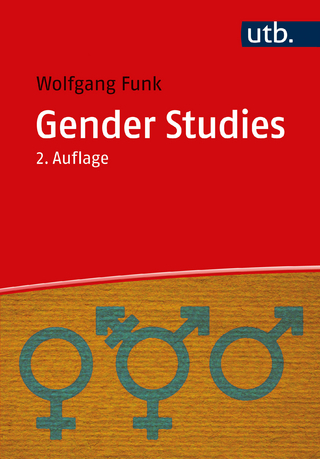
Gender Visibility and Erasure
Emerald Publishing Limited (Verlag)
978-1-80382-594-6 (ISBN)
Gender can be rendered invisible when the gendered nature of institutions is ignored or when the genders of participants in events or movements are not identified. The genders of non-binary and gender-diverse individuals can be erased when gender is conceived of as binary. From an intersectional perspective, genders of people of various classes, castes, races, ethnicities, ages, occupations, or other specific characteristics may be absent from data, erased from public view or rendered invisible by stereotypes or policy decisions.
Gender Visibility and Erasure offers a unique way of focusing on gender by identifying the multiple contexts in which issues of visibility, invisibility, and erasure manifest. It is a consideration of who is seen and who is ignored, who has voice and who is silenced, who has agency and who is controlled. Social, cultural, and political factors associated with gender and visibility are also discussed throughout the work. International in perspective, further considerations are made around how gender visibility may change over time in varying contexts such as migration, a program for recruiting lower income girls into STEM fields, academia, government family planning policy, and domestic violence.
This 33rd volume of the Advanced Gender Research series, Gender Visibility and Erasure is the ideal work for those studying and researching the in/visibility aspects regarding gender and how this currently and may continue to impact society.
Vasilikie Demos is Professor Emerita of Sociology at the University of Minnesota, Morris, USA. She is co-editor of the Advances in Gender Research series. Marcia Texler Segal is Professor of Sociology and Dean for Research Emerita at Indiana University Southeast, USA. She is co-editor of the Advances in Gender Research series.
PART I - GENDER VISIBILITY AND ERASURE
Gender Visibility and Erasure: An Introduction; Vasilikie Demos and Marcia Texler Segal
Chapter 1. Processes of Invisibility: Case Studies of Women in Sociology; Mary Jo Deegan
PART II - EMBODIMENT, VISIBILITY AND ERASURE
Chapter 2. Behind the Mask: Intersectional (In)visibility of Indo-Fijian Queer Experiences; Domenica Gisella Calabrò, Romitesh Kant, Sidhant Maharaj, and Jasbant Kaur
Chapter 3. “Nobody Ever Correctly Recognizes Me”: Nonbinary Presentation, Visibility, and Safety Across Contexts; Max Osborn
Chapter 4. False Identity and Failed Existence: Replacing Afro-Saxon Masculinities with Empire-Resistant Identities in Paule Marshall’s “Barbados” and Olive Senior’s “The View from the Terrace”; Tyrone Ali
PART III - INTERSECTIONALITY, VISIBILITY AND ERASURE
Chapter 5. Invisibility, Relative Deprivation and Social Stratification in Greece: A Study of Migrant Women’s Perceptions of Inequality at Work during the Crisis; Paraskevi - Viviane Galata
Chapter 6. Written to Be Erased: Paper Rights and the Visibility of Migrant Domestic Workers; Rima Sabban and Hannah Kasak-Gliboff
Chapter 7. Ageism and Sexism: Invisibility and Erasure; Barbara H. Chasin and Laura Kramer
Chapter 8. A Multidisciplinary and Intersectional Educational Approach for Motivating Adolescent Girls in STEM; Tânia M.C. Almeida, Kátia Tarouquella Brasil, Dianne Magalhães Viana, Simone Aparecida Lisniowski, Maura Angélica Milfont Shzu, Valérie Ganem, Suzana M. Ávila, and Aline S. De Paula
PART IV - GENDER-BASED VIOLENCE, VISIBILITY AND ERASURE
Chapter 9. Measuring Violence, Erasing Struggles: Hermeneutical Injustice in Domestic Violence Research; Preethi Krishnan
Chapter 10. Global Consensus, Dissensus, and National Policy Development: Sterilization and Abortion in Peru; Erika Busse and Elizabeth Heger Boyle
Chapter 11. Regulate or Abolish Sex Work? Feminist Approaches to the Sex Industry in the European Union; Gabriela Artazo, Maria Jesús Rodriguez-Garcia, and Gabriela Bard Wigdo
PART V - CONCLUDING THE VOLUME
Chapter 12. Rape on a Subway Train: Reflections on the Politics of Sexual Misconduct, Race, and Erasure; Marla H. Kohlman
| Erscheinungsdatum | 29.07.2022 |
|---|---|
| Reihe/Serie | Advances in Gender Research |
| Verlagsort | Bingley |
| Sprache | englisch |
| Maße | 152 x 229 mm |
| Gewicht | 518 g |
| Themenwelt | Sozialwissenschaften ► Soziologie ► Gender Studies |
| Sozialwissenschaften ► Soziologie ► Mikrosoziologie | |
| ISBN-10 | 1-80382-594-4 / 1803825944 |
| ISBN-13 | 978-1-80382-594-6 / 9781803825946 |
| Zustand | Neuware |
| Haben Sie eine Frage zum Produkt? |
aus dem Bereich


